Pop quiz: name 2020’s seven wide-released horror movies. That is to say, the seven horror movies that opened in at least 600 theaters domestically. No Googling either. Just go off the top of your head. I’ll give you a minute.
And…time.
If you shouted The Grudge, Underwater, The Turning, Gretel & Hansel, Fantasy Island, Brahms: The Boy II, and The Invisible Man – well, first of all, why are you shouting? I never said to do that. Secondly, bravo! You got all seven.
Behold – 2020’s Magnificent Seven of Horror!
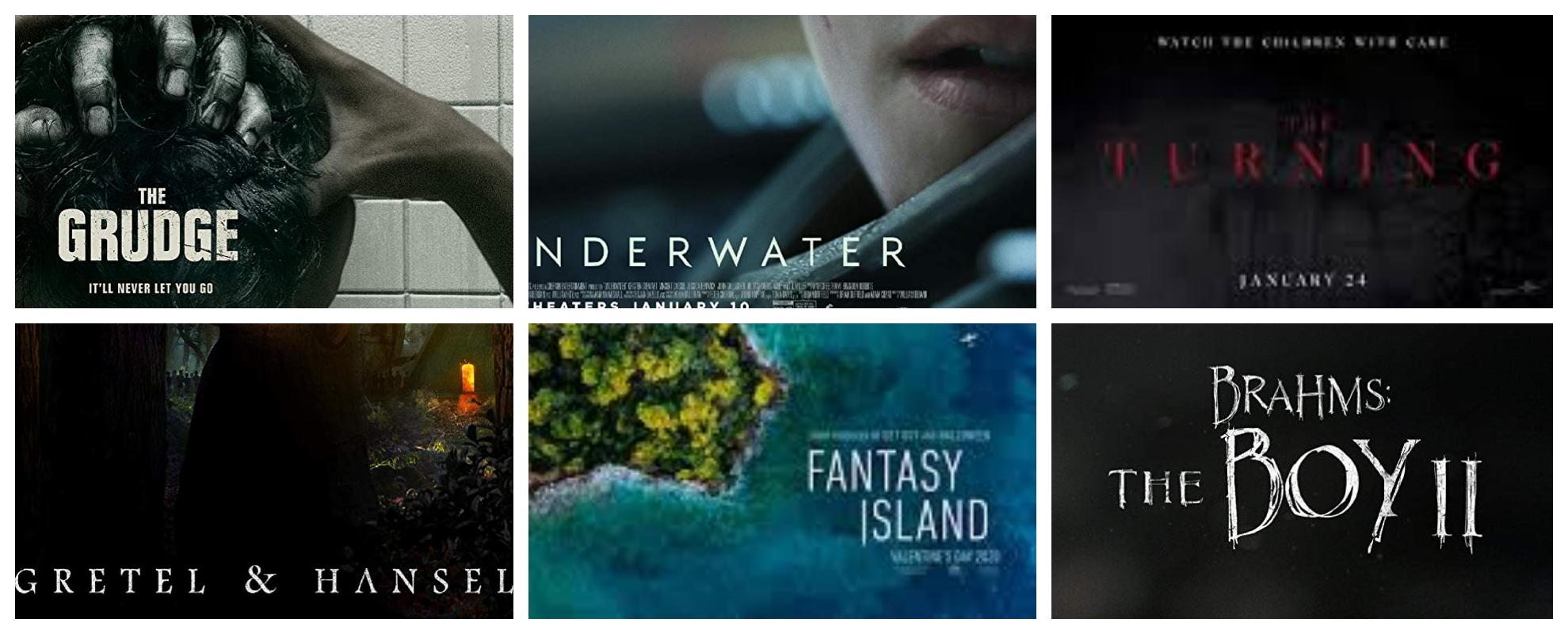
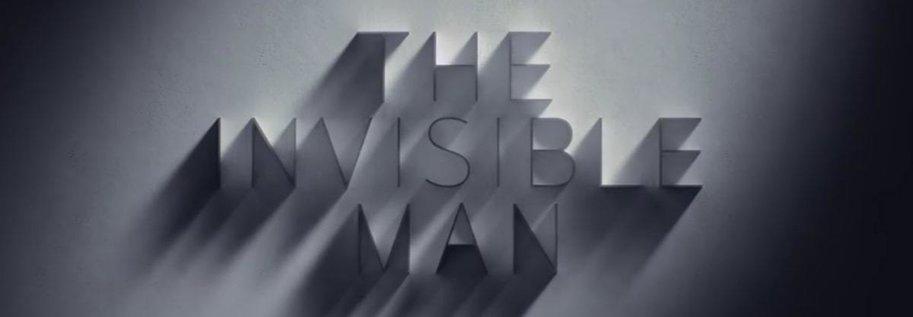
Although let’s be real here, few would really associate the word “magnificent” with this particular collection of horror oddities. I’ve seen six of the seven – I just can’t with Brahms: The Boy II – and I’ve had a good time with a couple of them, particularly Underwater. Still, it’s safe to say Hollywood isn’t exactly rolling out its best right now – before Invisible Man at least.
What most optimistically began as the promise of a new horror movie in theaters practically every week has gradually revealed itself to be what it always was – a dumpsgiving event, a string of troubled productions and quickly made cheapies finding their way to the screen simply because horror seems like the “in” genre right now. Invisible Man partially popped because it was the first horror effort of the year to feel like it was a legitimate attempt at launching a genuine hit as opposed to a transparent cash grab or cut-our-losses Hail Mary.
Still, in 2020, every studio want’s a piece of the horror movie pie. Buoyed in recent years by hits like It, Get Out, Split, A Quiet Place, Us and the new Halloween, producers clearly sense there’s gold in them thar hills. Coming into the year, however, one of the big box office stories was always going to be whether Hollywood’s decision to go all-in on the horror genre would pay off. After all, packing 11 horror movies – the four with ultra-limited releases=Lore, Color Out of Space, The Lodge, Extra Ordinary – into the first 10 weeks of 2020 screamed “overreach.” The same stretch of time in 2019 yielded just 3 wide-release horror titles – Escape Room, The Prodigy, Happy Death Day2U.

The Part Where I Throw a Chart At You
But Hollywood is damn challenged to get anyone to pay to see any kind of movie in theaters. So, throw a bunch of horror movies at people. Why not? It’s not like anything else is consistently working, comic books and animation being the only other safe havens. This year, it took 7 tries to get it right. Blumhouse’s Invisible Man is horror’s first bonafide hit of 2020. (Whether Parasite – the highest-grossing foreign film in US history – qualifies as horror is a debate for another time, but it’s not categorized as such by BoxOfficeMojo.com.)
2020’s Horrific Horror Bounty*
|
Title |
Production Budget |
Domestic |
Worldwide |
|
The Grudge |
$10m |
$21m |
$48m |
|
Underwater |
$50m |
$17m |
$40m |
|
The Turning |
$14m |
$15m |
$18m |
|
Gretel & Hansel |
$5m |
$15m |
$20m |
|
Fantasy Island |
$7m |
$25m |
$45m |
|
Brahms: The Boy II |
$10m |
$11m |
$19m |
|
The Invisible Man |
$7m |
$52m |
$98m |
You can squint at The Grudge and Fantasy Island’s numbers long enough to convince yourself Sony – which made the former through its specialty label Screen Gems and co-produced the latter with Blumhouse – might end up doing ok on both, but as a collective whole, this had not been a good run for quality horror. Invisible Man needed just 10 days to double the genre’s prior 2020 high watermarks in domestic and worldwide gross.
A Cold Streak
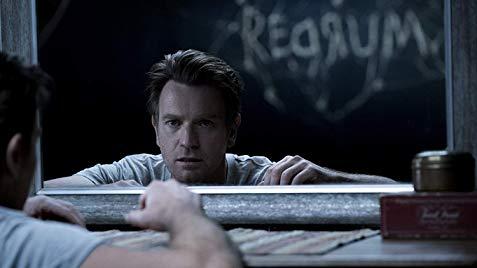
We shouldn’t be surprised. Coming into the year, audiences were already showing signs of horror fatigue, flatly rejecting The Lighthouse (one of A24’s lowest-performing horror efforts), Doctor Sleep (which failed to double its $45m production budget) and Black Christmas (a box office lowlight for Blumhouse) after turning cool on It: Chapter Two (which earned 32% less than its predecessor). Another late-2019 release, Countdown – STX’s “killer app” flick starring You’s Elizabeth Lail – at least did ok for itself, scoring nearly $50m worldwide off a sub-$7m budget.
Still, part of the reason horror has been so resurgent in recent years is its cost-efficient production model and ability to still feel like a unique cinematic experience that can’t be replicated at home. The argument: the communal experience of being scared in a theater is more cathartic than watching a horror movie at home. That’s to say nothing of society’s ongoing march toward ruin that has left so many longing for some kind of release.
Undaunted, We March Onward
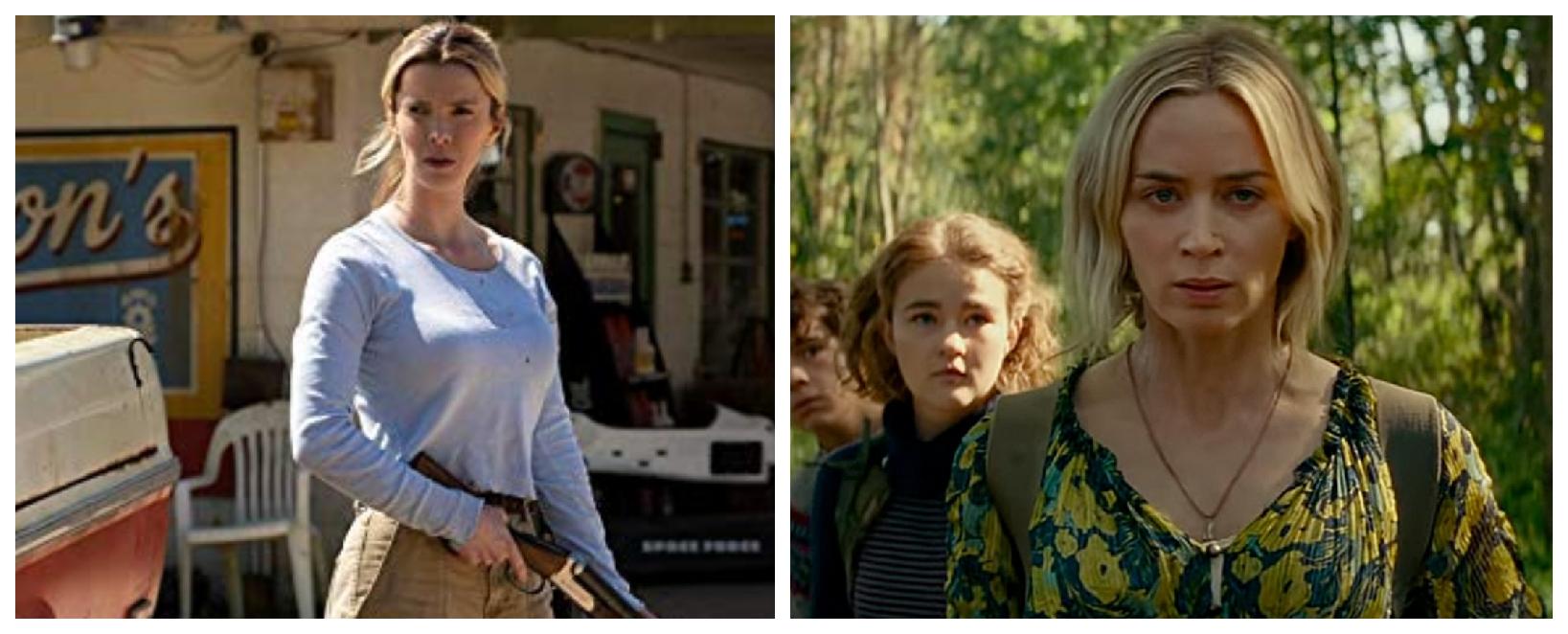
As such, a sudden cold streak at the box office isn’t going to change things. The rest of March promises more of the same – The Hunt (Blumhouse’s beleaguered Most Dangerous Game remake) drops next week, A Quiet Place II the week after. Looking further down the road, to find a two-week stretch that doesn’t feature a new widely-released horror movie you have to go all the way to mid-June. After Candyman’s June 12th debut, the genre takes a month off before returning with a currently-untitled Purge sequel on July 10th.
Of course, movie theaters around the country could be closed by then, if not sooner. In the end, the only thing that might truly stop Hollywood’s 2020 horror onslaught won’t be audience indifference – it’ll be the real-life horror of a global pandemic. If we’re all suddenly living in the first episode of The Stand, turnstiles everywhere will close. That’s ok – CBS All Access’ The Stand remake is might be on streaming by then.
Should such social distancing measures become necessary, The Invisible Man might be one of the last old-fashioned box office stories for a while. In China, we’ve seen experiments in digital distribution where blockbusters ticketed for theatrical release have been released online – seemingly at a financial loss – since the theaters there are all closed. That might soon become the prism through which we look at Hollywood’s financials in 2020. As previously stated, we simply do not know what’s coming next.
The Metaphor is Strong in This One

Invisible Man, of course, speaks to an entirely different kind of existential dread. Serendipitously released just three days after Harvey Weinstein’s guilty verdict, this Invisible Man takes the H.G. Wells mad-scientist classic and reframes it as a #MeToo story from the victim’s (Elisabeth Moss) point of view. Through writer-director Leigh Whannell perfectly placed camera, we vicariously experience what it feels like to be gaslighted by an abusive ex (Haunting of Hill House’s Oliver Jackson-Cohen) who just happens to be a tech genius with a first-of-its-kind invisibility suit.
“You literally have a man who is invisible, you can’t see him, she’s saying he’s there, that he’s attacking her, abusing her, manipulating her, and everyone around her is saying, ‘Relax. It’s fine.’,” Elisabeth Moss told Empire Magazine. “And she keeps saying, ‘No, he is-he’s alive, he’s doing this,’ and no-one believes her. The analogy is incredibly clear.”
As we saw with last year’s Black Christmas, however, sometimes your metaphor can be a little too obvious for its own good. By trojan horsing your social commentary into a genre picture, you’re making a pact with the audience that the film is going to have a message but also be enjoyable. As Joe Bob Briggs previously said of the Black Christmas kerfuffle, which I detailed elsewhere on the site: “Nobody would care about the speeches condemning the patriarchy if they were backed up by suspense, shock, tension, and, uh, horror.”
The world is such a shitshow these days, but luckily the documentary business is booming and the streaming wars have turned Hollywood into a Silicon Valley clone with a voracious appetite for content. If an issue moves you enough and your someone with even a little sway, you have options, like backing a documentary or starring in an indie drama with Oscar aspirations instead. (Kerry Washington, for example, helped produce a documentary about the ACLU’s on-going fight against the Trump Administration and it picked up distribution at Sundance.) The trick is getting people to actually listen, a tall task these days, thus the boom in genre metaphor movies.
“Even Margaret Atwood has said that you can write something that is incredibly meaningful and important and has a deep message, but if you don’t make it entertaining no-one’s gonna give a shit. And that’s what we tried to do with this film.”
Elisabeth Moss told Empire.
Tellingly, Whannell’s initial Invisible Man inspiration had nothing to do with #MeToo. “Slowly, brick by brick, I started putting a story together,” he told SFX Magazine. “I started by ruling things out. I said, ‘Well if I was doing an Invisible Man film, I would want it to be very modern, not Gothic in any way. I don’t want this to be a throwback movie, a nostalgia play, filled with Gothic-horror references. I’d want it to be very cold and clinical and modern.”
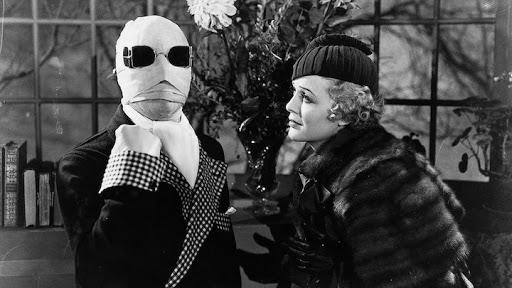
“What initially interested me was the idea of photographing nothing and making it threatening,” Whannel told Empire about the cinematic challenge he saw in Invisible Man. “To point a camera at an empty room and make it threatening. To make a film where you don’t see anything. When most people think of the Invisible Man they think of these floating sunglasses. The trenchcoat and the hat. I wanted to make a film that completely disowns that and concentrates not on what it looks like when the Invisible Man is wearing something-therefore making him visible-but focuses all of its energy on nothingness.”
This is one of The Invisible Man’s biggest accomplishments. Whannell has frequently cited Rosemary’s Baby, Gone Girl, and Hereditary as his cinematic touchpoints. To my mind, however, his frequent use of the “methodically pan to an empty space and challenge the audience to examine every inch of the frame in search of the monster” trick pleasantly recalls David Robert Mitchell’s work in It Follows.
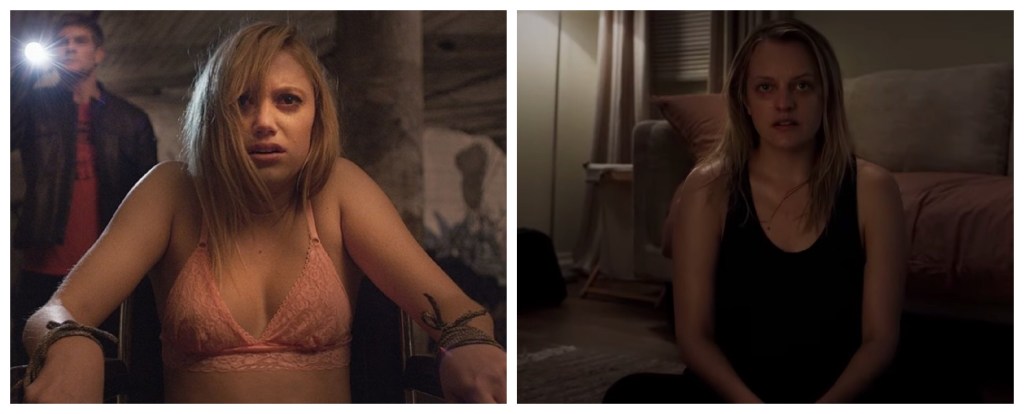
Your mileage may vary, but you don’t need to pick up on any of the cinematic allusions to enjoy the jump when the Invisible Man makes his presence known, initially in small ways like cold breath on the back of Moss’s neck before outright attacking her. The tension is knowing he could harm her at any time, and you have no idea when it’s going to come or how she can possibly fight back.
“My goal with this is to have people feel like the whole film is a vice,” Whannell told Empire, likely explaining the Hereditary touchpoint. “Almost an oppressive experience.”
Not that all of this occurred to Whannell right away. In truth, his initial inclination was to pass on the project.
If At First You Don’t Succeed, Try The Same Thing Again. When That Fails, I Dunno, Just Blind Ask Directors for Pitches
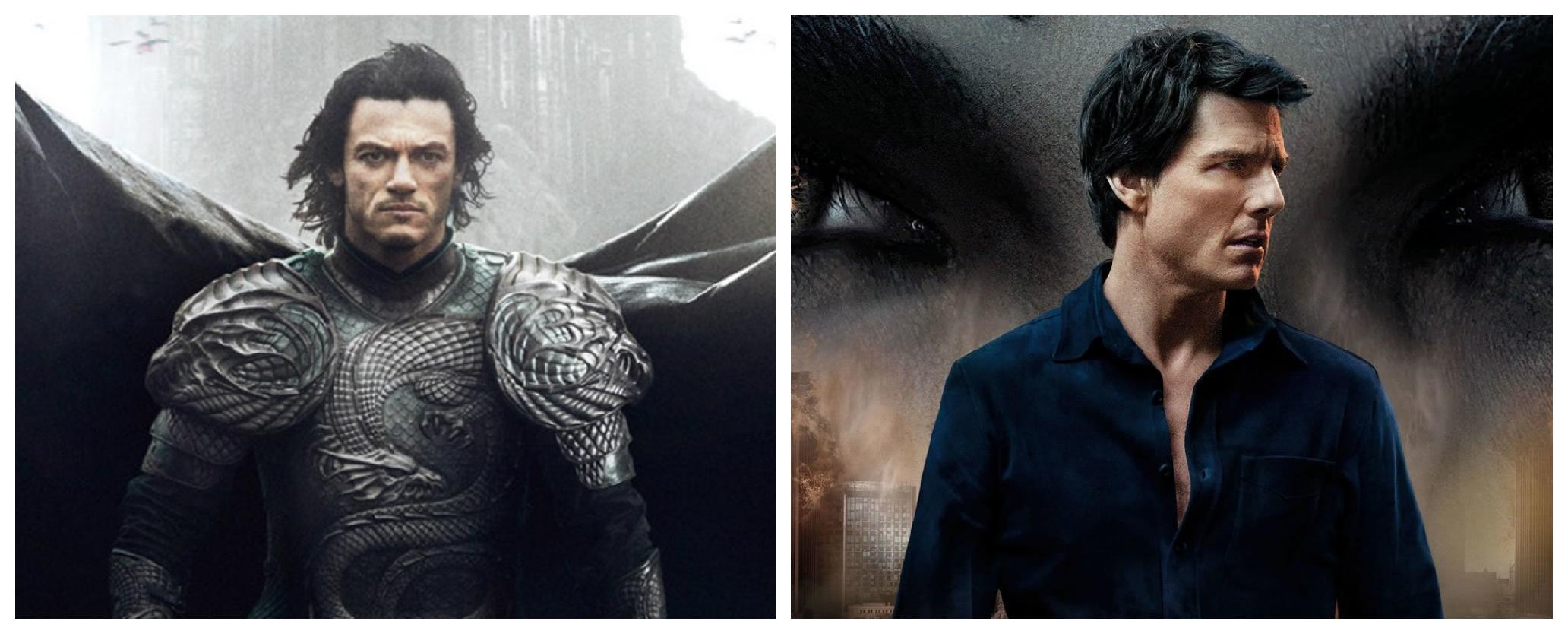
Invisible Man represents Universal’s third attempt in the last six years to relaunch its legendary monster line-up, following confused, wannabe blockbusters Dracula Untold (2014) and The Mummy (2017). After twice employing the ill-fated “like the MCU, but with Universal monsters” formula, studio chairwoman Donna Langley and her team threw up their hands and went back to simply trusting filmmakers to make good movies.
By Whannell’s recollection of events, when Universal approached about him directing The Invisible Man it came with no preconditions or concepts. “They didn’t have a story or a direction to head in. It was just a question: What do you think of The Invisible Man?”
Whannell only took the meeting as a courtesy. He was finishing up his sci-fi 80s throwback Upgrade for Blumhouse and Universal’s genre subsidiary distributor OTL Releasing. An Invisible Man – a character most recently featured in films like Paul Verhoeven’s especially sleazy thriller Hollow Man (2000) and John Carpenter’s ill-fated Chevy Chase vehicle Memoirs of an Invisible Man (1992) – retread was the last thing on his mind.

Whannell pictured a vacation and Mai Tais in his future and then after that hopefully something like Upgrade but with a bigger budget. Horror – the genre which has treated Whannell so well since he wrote the first Saw script as a 23-year-old and later hit it big a second time with the Insidious franchise – wasn’t where his head was at.
But it’s not like James Wan – Whannell’s old collaborator and fellow horror nut – woke up every day of his life thinking about how he could get his career to a place where he could finally make an Aquaman movie. “I remember asking James Wan about doing Aquaman,” Whannell recalled during his SFX interview. “And he said, ‘It’s cool because everyone hates Aquaman. He’s a punchline. He’s the fish guy.’ So, he felt like he was really coming from an underdog place. He said, ‘I feel like I can make Aquaman cool.’”

Make the Invisible Man Cool Again?

Well, kind of.
“The next step was deciding that I wanted to tell the story from the victim’s point of view,” picking back up from Whannell’s SFX interview, as he describes why he departed from the traditional way of adapting the Invisible Man to screen. “I felt that the strongest version of that story would be one told from the victim’s point of view, and the Invisible Man was more of a mysterious entity.”
Small problem: what the heck does a guy know about domestic abuse from the woman’s point of view?
For that, Whannell turned to counselors at a Los Angeles clinic that helps survivors of abuse. “I knew I needed to talk to somebody to get some insight,” he told Empire. “Being a man, who’s never been in that situation, I didn’t wanna just write blindly and make it up.”
Still, to truly make it work he needed to find the right actress who could bring her own perspective and life experiences to the part. Moss – who knows a thing or two about abuse stories thanks to projects like Handmaid’s Tale and Top of the Lake – was so good in a supporting role in last year’s Us but had never led a wide-released horror movie like this before. She’d always wanted to, considering herself a horror fan since the age of 11. From the way they tell it, though, Moss is not only the star of Invisible Man but pretty much its unofficial co-writer.
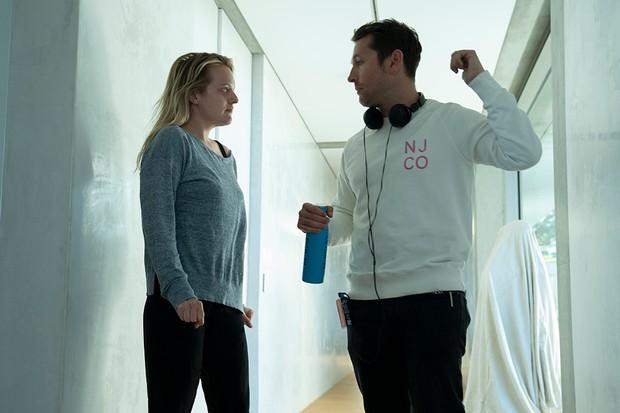
“I said, ‘I’ve written this character, but I’ve only written 70% of it. It’s not a flesh-and-blood human being.’,” Whannell told Empire of his first meeting with Moss. “And she was awesome. She said, ‘Let’s go.’”
Thus began a partnership Whannell has lovingly compared to Cagney and Lacey. “We would sit for hours in a room, just he and I. Going back and forth, and writing things in the script, pitching ideas to each other. Literally dialogue,” Moss told Empire. “Shooting out all the bad ideas until we got somewhere that we liked, and then we’d both go home and write it out and put it in the script.”
What they created together is a movie that both honors an abuse victim’s experience and maintains the right to yell “boo!” at the audience at just the right moment to make them jump in their seat. As Moss has recounted multiple times on the publicity tour, the first time she saw the finished cut she jumped at least 9 times and she’s in the movie!. For the record, I only jumped once, but these days it takes an awful lot to get me to jump at horror movies at all. The Invisible Man jump scare that got me – no spoilers, but it involves paint – is one of the best I’ve ever seen.
Airing of Grievances
Invisible Man is not without its flaws. Jackson-Cohen has joked that at least 70% of his performance is simply the musical score since he’s only on screen for a couple of scenes and composer Benjamin Wallfisch helps fill the empty space with foreboding strings. I can see why Whannell picked Wallfisch, hot off films like Annabelle: Creation and It: Chapters 1 and 2, but Wallfisch too often overpowers the film with noise.
Plus, as Bill Simmons and Sean Fennessey memorably debated on a recent episode of the Big Picture podcast the ending of this film doesn’t pass the logic test. Whannell shamelessly plucks from the Gone Girl playbook to give us a satisfying revenge fantasy, and if you’ve already gone that far with Invisible Man maybe you’ll indulge some climactic exaggerations. It works better the less you think about it, not more. Some movies are like that, and that’s not always a bad thing.
1 for 7 Is…Bad?
Based on the box office thus far, audiences seem to be on Invisible Man’s side. 2020’s other horror efforts will likely find audiences somewhere. The streaming services are always happy to buy up content and certain sections of horror fandom remain fanatic about owning physical media. Really, the horror genre is all around us these days. Blumhouse delivers a new horror movie a month via its Hulu anthology series Into the Dark, every episode a feature-length story themed to a holiday. Shudder delivers new titles every week and the VOD space is awash in horror content.
Given that level of competition, it’s always a bit of a miracle when a horror movie takes off in theaters. The Invisible Man benefited from good timing, an easily communicated premise, and a star+director tandem riding nothing but momentum. Sure, in its politics it went woke, but it sure as heck didn’t go broke.
Whannell set the new template for Universal – wanna relaunch Dracula, Frankenstein and the rest? Focus on how you can recontextualize them to seem relevant today and make a good, cost-effective horror movie out of it. Leave the cinematic universe building to the experts at Marvel. Now I hear James Wan is going to do one of these monsters movies for Universal. 2020 has been a rough time for the genre so far, but this section of the horror film universe seems like it’s finally in good hands.


